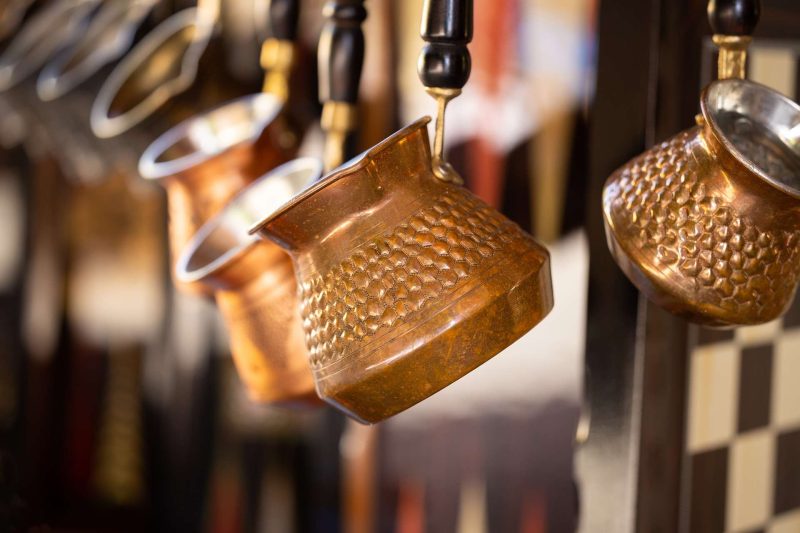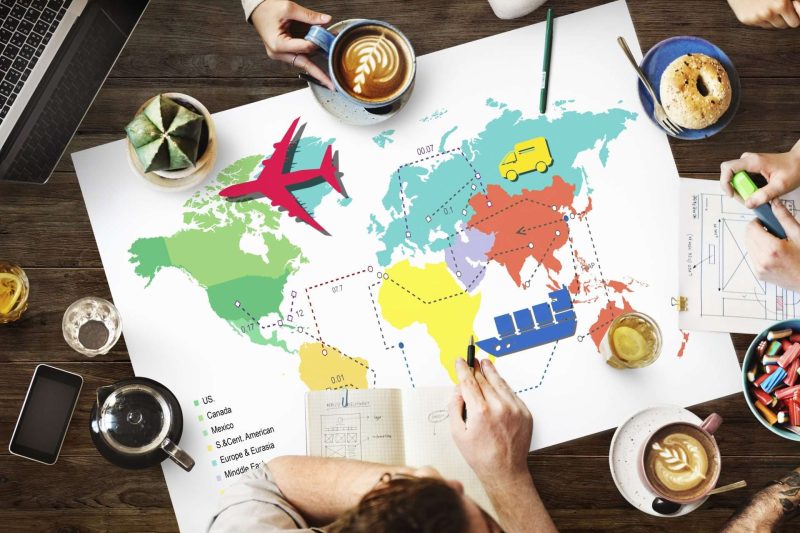Last updated on January 15th, 2024 at 06:52 pm
This article is a very brief summary of the history of coffee, which give you some knowledge and background about this fascinating drink’s humble start to today’s world’s most popular drink daily.
The Very Beginning of The History of Coffee
Coffee is a popular beverage today. The rich history of coffee dates back to ancient times in about the 10th century.
Coffee is believed to have originated in the highlands of Ethiopia, where the indigenous people of the region discovered the energizing effects of coffee beans.
From there, coffee quickly spread to the neighboring regions and eventually to the rest of the world, becoming one of the most widely consumed beverages in the world.
The origins of coffee can be traced back to the Kingdom of Kaffa in Ethiopia:
Legend has it that a goat herder named Kaldi discovered the magical properties of the coffee plant when he noticed that his goats became more energetic after eating the beans.
This discovery soon spread to the local monks, who started using the beans to stay awake during long hours of prayer.
From Ethiopia, coffee then made its way to the Islamic world, where it became a popular drink and an important part of social and cultural life.
The word “coffee” is believed to have come from the Arabic word “qahwah,” which refers to the drink made from the beans of the coffee plant[1].
13th To 18th Century Coffee Culture
In the 13th century, coffee spread to the neighboring regions of Yemen and was soon introduced to the Islamic world. The drink became popular among Sufis, who used it as a stimulant to stay awake during their religious ceremonies.
It wasn’t until the 16th century that coffee began to spread beyond the Muslim world. The first coffee plant was brought to the Arabian Peninsula by a merchant named Baba Budan.
From there, it was introduced to the Ottoman Empire[2], where it quickly became a popular drink. Both the rich and the poor enjoyed it.
The popularity of coffee in the Ottoman Empire led to its introduction to Europe, where it was first introduced to Venice in the early 1600s.
In the 17th century, coffee reached Europe through the trade routes of the Ottoman Empire. The drink was initially met with resistance, as many Europeans believed that it was an intoxicating substance.
However, as its popularity grew, coffeehouses sprang up across Europe, becoming centers of social and political life. Coffee shops began to appear in cities such as London, Paris, and Amsterdam.
These coffee shops served as important centers of social and political life, providing a place for people to gather and discuss ideas.
In many cases, these coffee shops became important centers of political opposition, and they were often the target of censorship and repression by governments.
The 18th century saw the rise of the British East India Company, which established a monopoly over the coffee trade between Europe and the Middle East.
The company’s control over the coffee trade helped to popularize the drink in Britain, and it soon became a staple of British society.
At the same time, coffee was also being introduced to the New World, where it became an important part of the colonial economy. The first coffee plant was brought to the New World in the early 17th century and was planted in the Caribbean.
From there, coffee spread to the rest of the Americas where it quickly gained popularity in the colonies and became a staple beverage in the region.
19th Century To Today's Coffee Development
As coffee became more popular, the demand for coffee beans increased, leading to the development of coffee plantations in the Americas. This resulted in the growth of the coffee trade, which became one of the most important industries in the world.
The coffee trade also led to the growth of the slave trade, as many African slaves were brought to the Americas to work on the coffee plantations.

The 19th century saw the rise of the coffee industry, as coffee plantations were established in countries such as Brazil, Colombia, and Venezuela.
The development of new technologies, such as steam-powered ships and railroads, made it possible to transport coffee to markets around the world. The coffee drink became increasingly popular in the United States and other countries.
The 20th century saw the rise of new coffee-drinking cultures. In Italy, the espresso machine was invented. In the United States, the coffee house became a popular gathering place for artists and intellectuals.
In the late 19th and early 20th centuries, coffee became a mass-produced commodity, and the coffee industry continued to grow. Today, coffee is grown in countries all around the world, including South America, Africa, Asia, and the Caribbean[3].
It is one of the most widely consumed beverages in the world and is enjoyed by millions of people every day. The coffee industry employs millions of people, and coffee is a staple of modern society, enjoyed by people from all walks of life.
Despite its popularity, coffee remains a controversial drink[4], with some people concerned about its impact on the environment, the exploitation of coffee workers, and the health effects of excessive coffee consumption.

Conculsion
The rich history of coffee dates back to ancient times about 1100 years ago. From its origins in Ethiopia to its spread throughout the world, coffee has become a staple beverage that is enjoyed by millions of people every day.
Despite its humble beginnings, coffee has become one of the most important industries in the world, with a rich cultural and historical significance.
Whether it is enjoyed in a coffeehouse, at home, or on the go, coffee remains a beloved beverage that is steeped in history and tradition.
If you want to know the coffee industry today and beyond, please check out our other blogs like “Keurig Slim vs Keurig Mini Plus“. As much as I like to share my knowledge and skills with you, I love to hear from you.
If you have any suggestions or comments, please click here. Also don’t forget to subscribe to our quarterly newsletters if you like my blogs and like to keep in touch.
You should take part in a contest for one of the best blogs on the web. I will recommend this site!